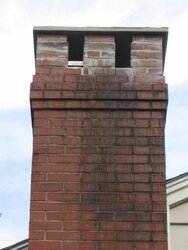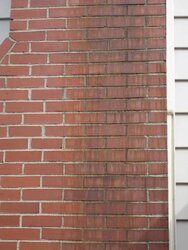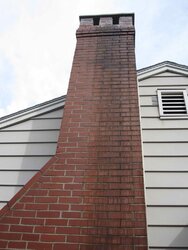Hi,
I'm living temporarily in a friend's house and am looking for some help to solve an issue. As you can see from the photos, there is significant staining on the outside of his chimney. He just redid the top of it taking care of the brickwork and cap which is bluestone. He just replaced the 50 or so year old oil furnace with a new efficient oil furnace and he rarely if ever uses the fireplace. There are two flues in the chimney. From the photos, the right side is used by the oil furnace and the left side is for the fireplace.
Just wondering what people's opinions are about what caused the staining on the outside of the chimney and what is the best way to clean off the brickwork without damaging the chimney?
Thanks ahead of time for your responses.
I'm living temporarily in a friend's house and am looking for some help to solve an issue. As you can see from the photos, there is significant staining on the outside of his chimney. He just redid the top of it taking care of the brickwork and cap which is bluestone. He just replaced the 50 or so year old oil furnace with a new efficient oil furnace and he rarely if ever uses the fireplace. There are two flues in the chimney. From the photos, the right side is used by the oil furnace and the left side is for the fireplace.
Just wondering what people's opinions are about what caused the staining on the outside of the chimney and what is the best way to clean off the brickwork without damaging the chimney?
Thanks ahead of time for your responses.





